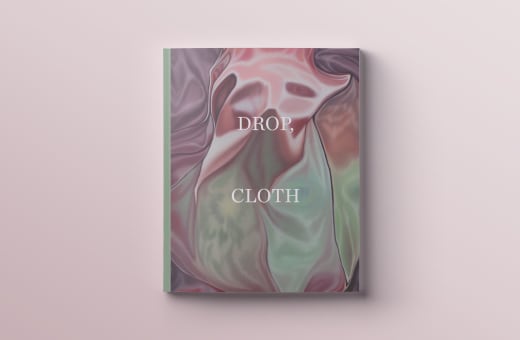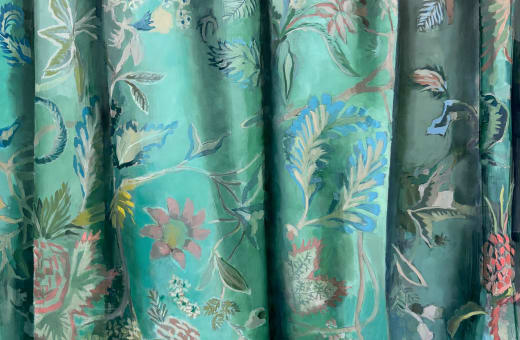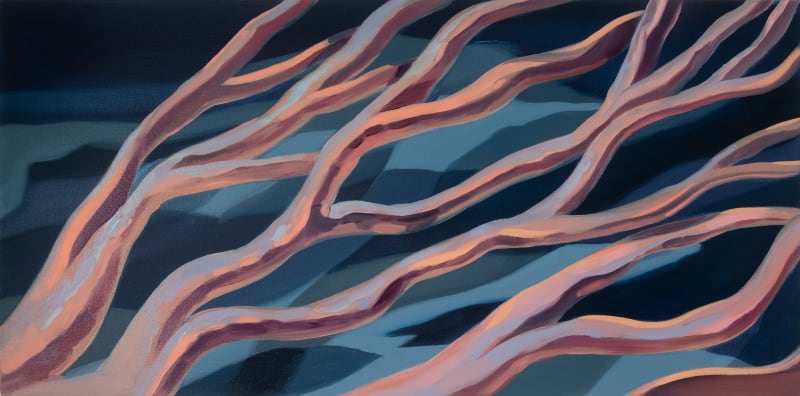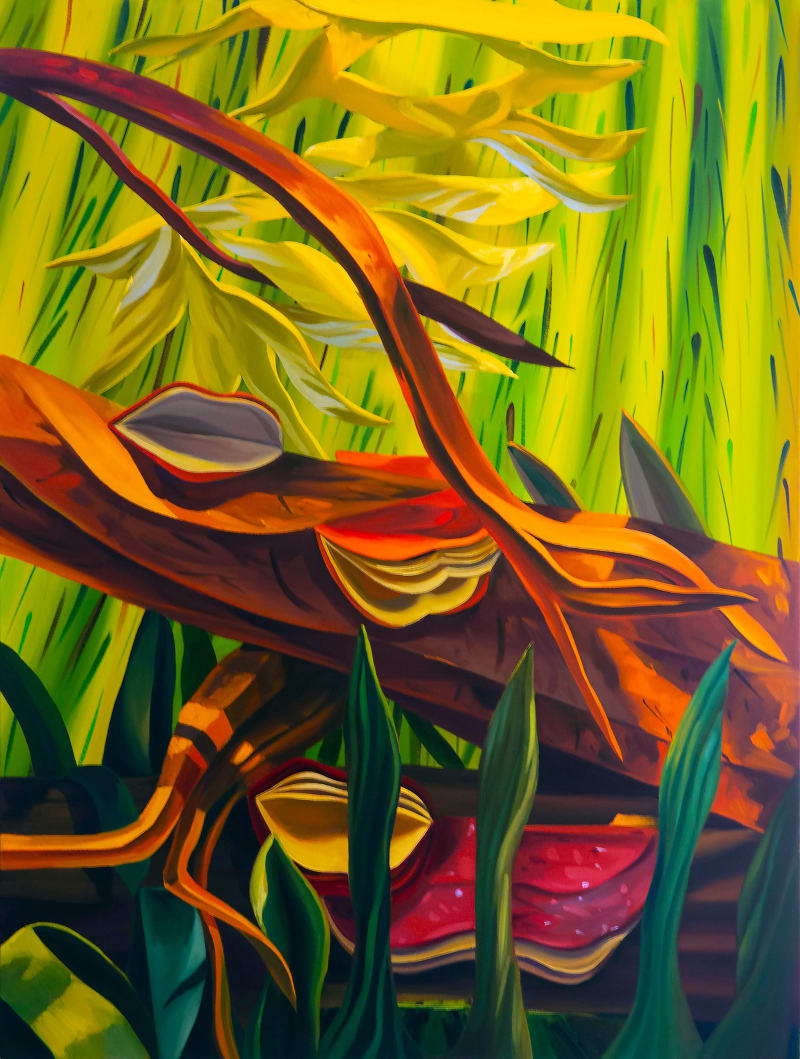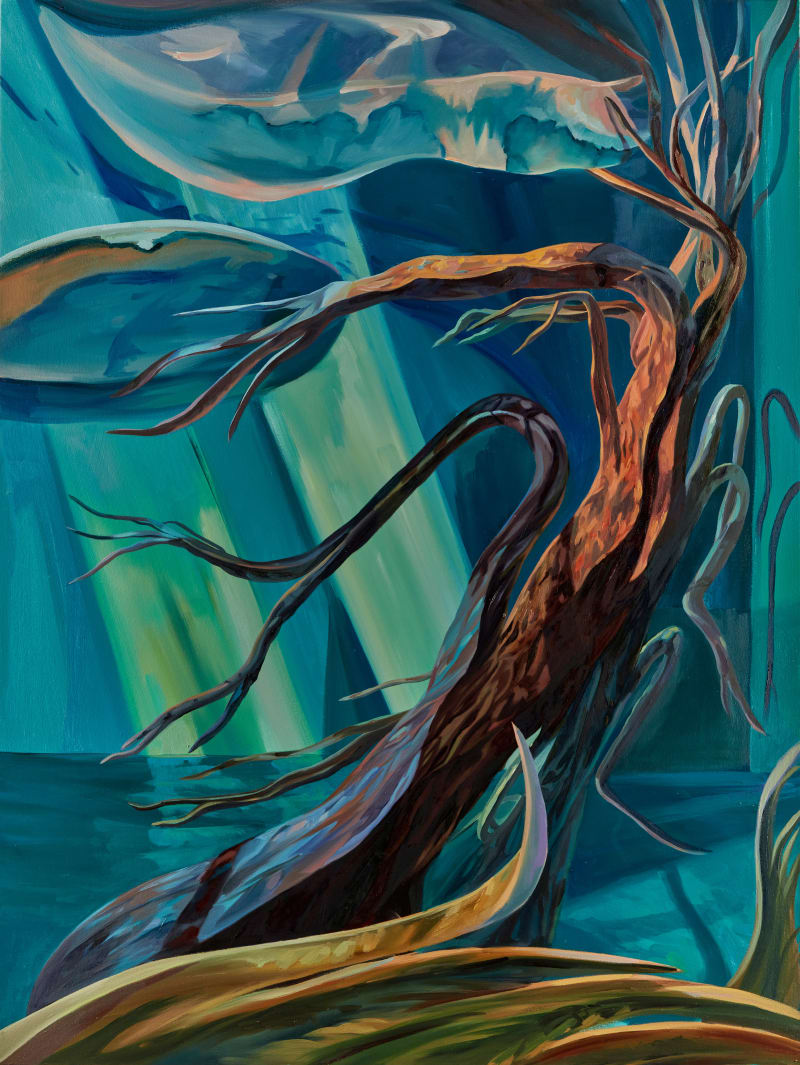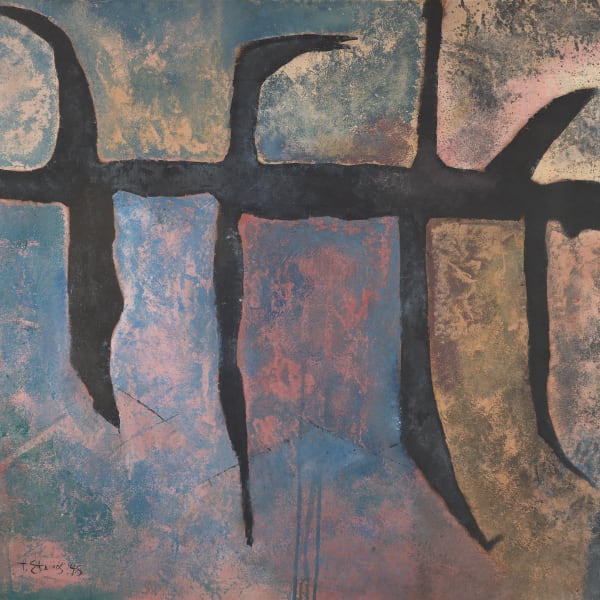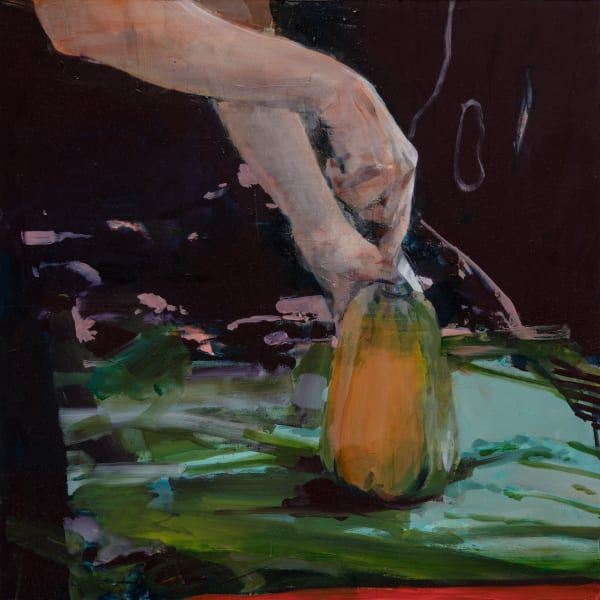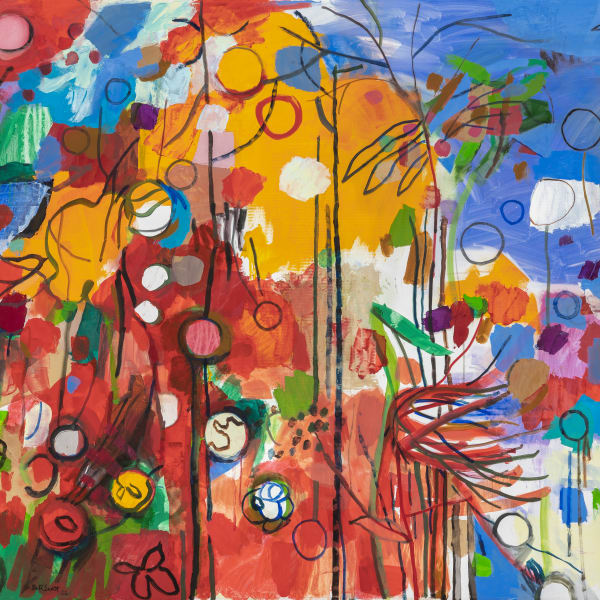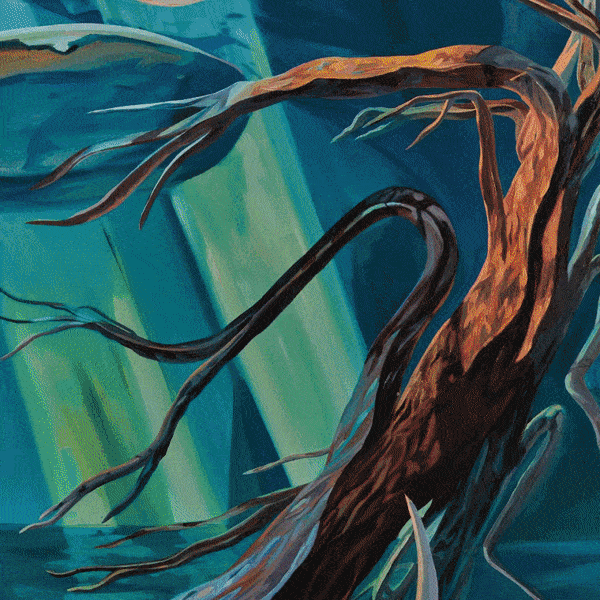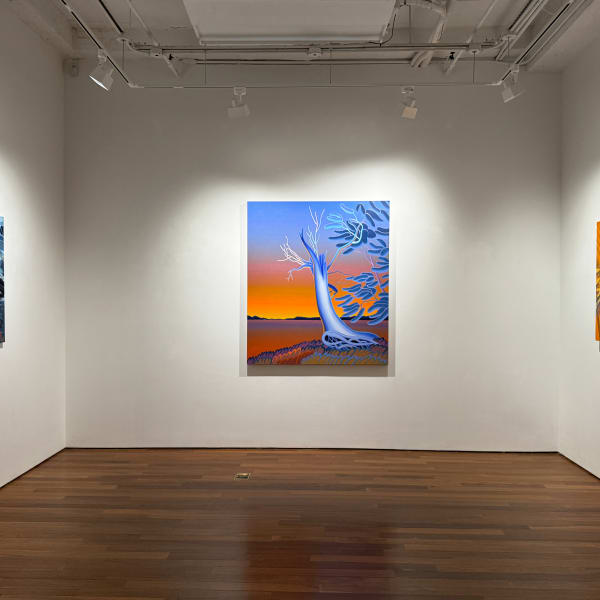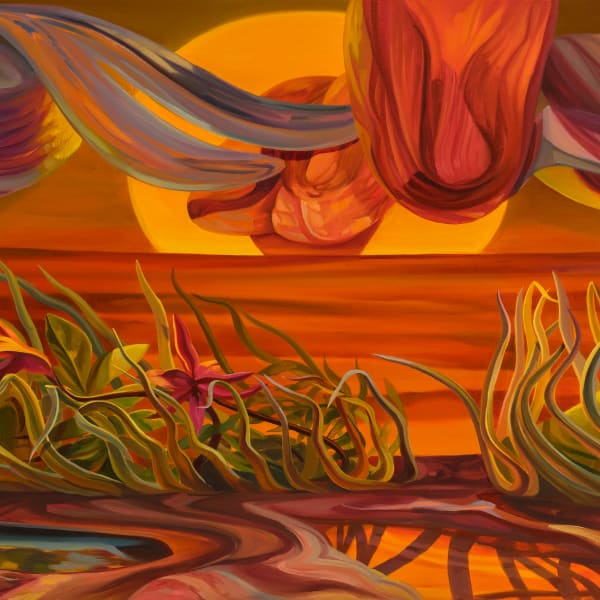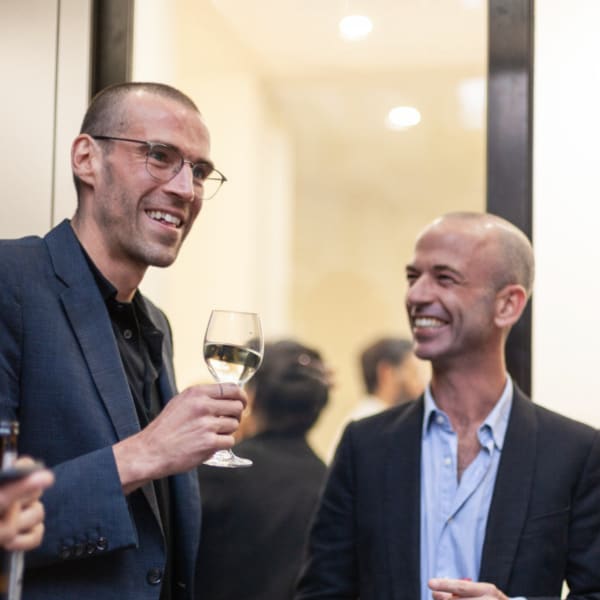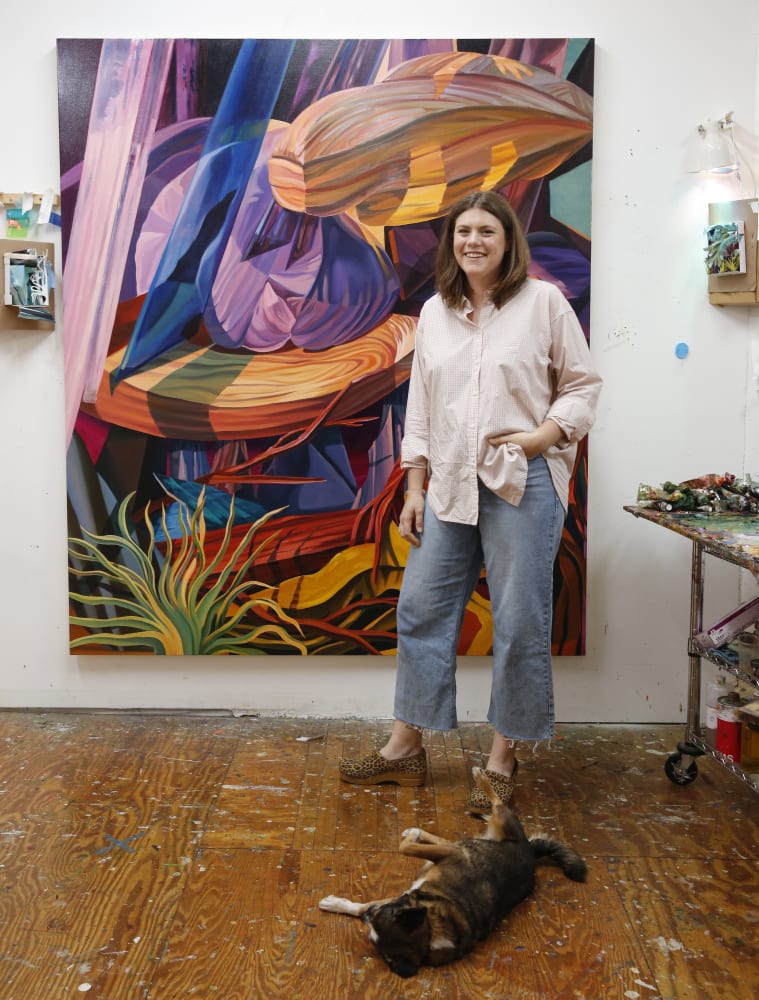
MacFarlane foregoes empirical representations of landscapes to create fantastical ones filtered through memory.
At the core of Rachel MacFarlane’s richly jeweled-toned works is a lament for the loss of places, especially landscapes, and the process of manufacturing new ones through painting. Informed by texts on the relationship between place and memory, such as Gaston Bachelard’s Poetics of Space and Frances Yates’ Art of Memory, MacFarlane foregoes empirical representations of landscapes to create fantastical ones filtered through memory. Though her works are based on specific sites, MacFarlane builds shallow box models out of paper to distill the memory of a place into an object before transforming it into a painting. These paper maquettes serve as the provisional, observational foundation for her works. Influenced by a wide variety of sources, including early Renaissance painters, the metaphysical works of Giorgio Morandi, abstractions by Thomas Nozkowski and Agnes Martin, as well as Canadian landscape painters like Doris McCarthy and Patterson Ewen, MacFarlane investigates the psychological nuances of illusionistic space.
At the core of Rachel MacFarlane’s richly jeweled-toned works is a lament for the loss of places, especially landscapes, and the process of manufacturing new ones through painting. Informed by texts on the relationship between place and memory, such as Gaston Bachelard’s Poetics of Space and Frances Yates’ Art of Memory, MacFarlane foregoes empirical representations of landscapes to create fantastical ones filtered through memory. Though her works are based on specific sites, MacFarlane builds shallow box models out of paper to distill the memory of a place into an object before transforming it into a painting. These paper maquettes serve as the provisional, observational foundation for her works. Influenced by a wide variety of sources, including early Renaissance painters, the metaphysical works of Giorgio Morandi, abstractions by Thomas Nozkowski and Agnes Martin, as well as Canadian landscape painters like Doris McCarthy and Patterson Ewen, MacFarlane investigates the psychological nuances of illusionistic space.
MacFarlane’s works expand on the long-standing genre of landscape painting to account for current ecological pressure on natural spaces. This approach helps to deprioritize the empirical recording of a site in favor of a more rhizomatic and fragmented relationship to the environment. New ideas for works are often triggered by expeditions to different sites––recent research trips have included New Orleans, Newfoundland, Arizona, Texas, and Ontario. MacFarlane chooses places purposefully based on their ecologies to get a pulse on various kinds of current environmental changes.
Landscape has long been MacFarlane’s formative backdrop. It frames her understanding of the world, and she sees landscape as spaces that are stoked with memory but also with psychological projection, playfulness, and fear. As the health of our natural environment declines, and in tandem, simulated “natural” worlds proliferate through virtual media, MacFarlane’s works speak to our complicated relationship to the natural world in our late-capitalist milieu and the viability of digital landscapes as a form of surrogate landscapes.
MacFarlane was born in Scarborough, Ontario in 1986, and holds an M.F.A. from Rutgers University, B.F.A. from OCAD University, and Certificate of Advanced Visual Studies from OCADU Florence program. She has had solo exhibitions at the MacLaren Art Centre, Ontario; Nicholas Metivier Gallery, Toronto; Norberg Hall Gallery, Calgary; Mason Gross Gallery at Rutgers University, New Brunswick, New Jersey; Howard Park Institute, Toronto; and Anna Leonowens Gallery at NSCAD University, Halifax, Nova Scotia. She has participated in group exhibitions across New York City, San Francisco, Florence, Quebec City, Halifax, Calgary, Toronto, and Philadelphia. She lives and works in New York City.




